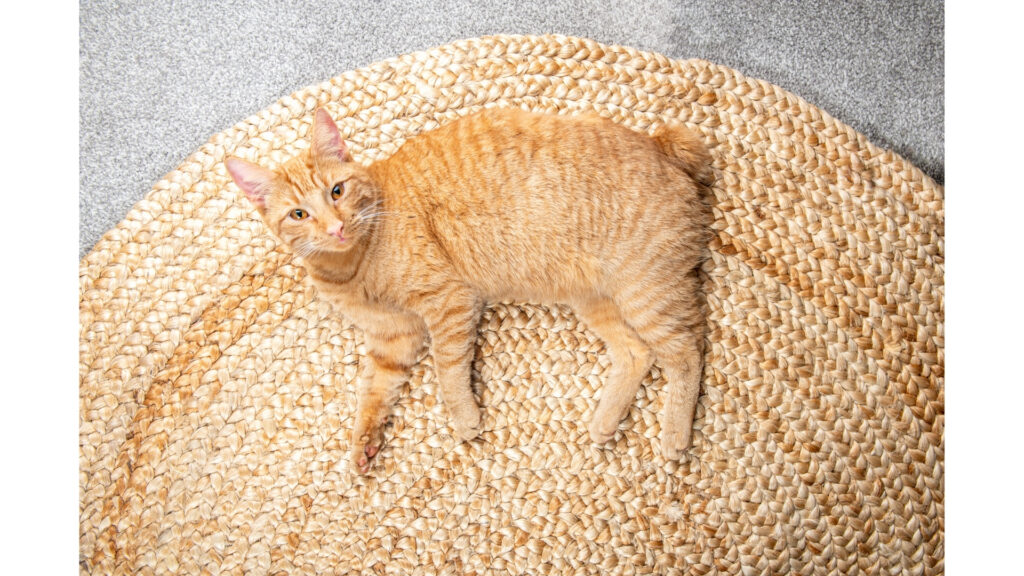Recently, people are more concerned about the hypoallergenic feature of rugs. They prefer buying a jute rug for their home decor. The natural materials of jute rugs provide a sophisticated feel and look to the house. Howbeit, they still ask a question, that is, “are jute rugs hypoallergenic?”.
Honestly, these rugs are natural fiber rugs that come with thinner textures. The thin texture offers the users a soothing feel to their feet. Besides, these are ignorant to trap allergens and add a natural air filter to the house. Therefore, Your home stays safe from allergy germs.
Jute rugs are naturally handmade products that are free from chemical treatments. Consequently, common allergens can’t stick to the rug surface. So, if you consider buying a jute rug, it will be the best decision unless you are allergic to jute fiber itself.
Are Jute Rugs Hypoallergenic
Although, there are some setbacks of jute rugs as they can shag a little at times. And such shagging is natural, which will be reduced with daily use. To buy allergy free rugs you can see here.
What Causes of Allergens In Rugs?
You certainly can look for a hypoallergenic rug. But do you know the causes of allergens in Rugs? There are multiple reasons for which a rug can cause allergic reactions. Other than the loose fibers of a jute rug, pet danders can also cause severe allergies.
Your pets are a part of your family, but they carry flakes of their dead skin. These dead skin flakes can easily grime into the jute rug fiber. Especially if the pets bring along outside pollen and soil along with them, your skin allergies might worsen.
Mold growth in jute rugs is another reason for allergic reactions. Keeping the rig in a moist place leads to the growth of mold rapidly. On top of that, if you fail regular cleaning, that will increase the growth of mold.
Furthermore, you must be cautious of the rug’s wetness. Such rugs are sensitive to long-time wetness. Thus, it’s better to dry it well after washing it. Additionally, you need to ensure good air circulation into the rug to prevent humidity. Humidity is another cause of instigating allergic reactions.
Foreign artifacts, among other things, are also one of the ways allergens get onto your rug. But this is an inevitable outcome. What exactly does that imply? When family members arrive, it is normal for them to have foreign objects stuck to their clothes, shoes, or whatever they are wearing. Carpets can collect those foreign irritants and reduce their spread at home.
What Good Can a Jute Rug Offer?
Jute is an eco-friendly, biodegradable fiber that’s used in vegetable transportation. It can decompose in the presence of water and other components. So, it easily fades out in the soil without leaving any waste. Besides, there is no need to use pesticides or fertilizers. That’s how it prevents chemicals from harming our environment.
A natural jute fiber rug comes in several neutral colors and consists of a softer surface. That prevents the floor from getting any damage. This natural fibers rug is safe for hardwood floors. As a result, your kids and pets can freely play without any risk of damage. However, there is a drawback.
The natural colors of the rug can easily hide dirt in the fiber. Therefore, it is better to clean it periodically to prevent dirt. Remember to avoid cleaning it with a beater bar as it might create minimal shedding. Apart from this, such natural fiber rugs material enhances indoor air quality. That’s how it helps in reducing allergenic symptoms.
Origin of Jute Rugs
Jute is mostly found in the Asian subcontinent. The Asian people use jute for any purpose other than producing rugs. The material comes from jute grass, a natural vegetable fiber. They’re one of the toughest fibers out there.
Jute is a central woody component of the plant stalk that is also known as Golden Fiber. As a result, cellulose and lignin are present in them. When the plant stem is removed, the fiber goes through a fascinating process. This is the method for making jute rugs.
Following harvest, the stalks are carefully placed (in slow motion) in flowing water for several weeks. This practice simplifies the removal of jute fibers as it softens the rubber. Then these split fibers are transformed into Jute yarn.
After that, they weave the jute yarn into a tightly woven fibers rug. At times, they even use machines to make some of the rugs. As there are variants in the jute rugs category. Now people even like machine-made jute rugs as well.
Setbacks of Jute Rugs
Jute is a good absorbent material as it’s produced from a plant. That indicates the jute rug is not stain-resistant or waterproof. Sometimes, the shape gets affected too. To avoid humidity and water damage, it’s best to use a protectant. Besides, it’s better to avoid using rugs in bathrooms or kitchens.
Unfortunately, you can’t go further and clean it up with steam. They also need direct sunlight protection, as jute color will fade away from the sun, especially when it is colored. It breaks down relatively earlier when it is compared with other natural fibers.
It’s not smart to use a jute rug in a high traffic area that is less sturdy. Mostly you should use the rugs for the low-traffic area. Although, you will find a variety of styles in these rugs that are sturdier enough to use in high-traffic areas.
Final Words
Jute is the most durable natural fiber. Weavers can create intricate designs without the use of synthetic adhesives because of this property. Furthermore, the rugs are highly durable due to the inter-thread bonding of this material. We’re talking of years of use without any deterioration. Jute rugs are usually the perfect option for pet-friendly homes.
Jute area rugs are ideal for homes with dust allergies because they are a natural dust mite repellent. Jute rugs are thin with tight and durable fibers, preventing rug fibers from being released into the air and enhancing the overall air quality by adding a natural filter to your home.



